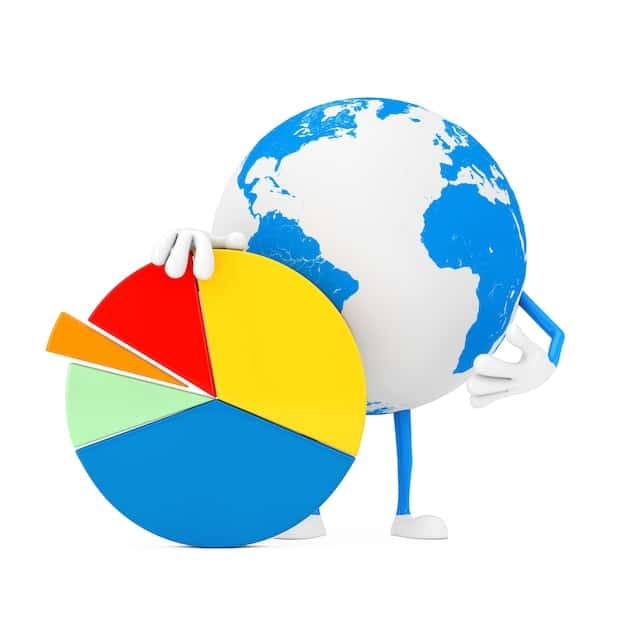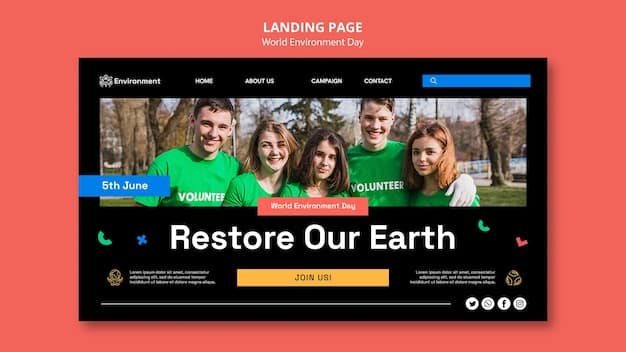Mastering Grant Writing & Fundraising for International Aid Organizations in the US

International Aid Organizations seeking to thrive in the US market can significantly enhance their impact by mastering best practices in grant writing and fundraising, adapting strategies to align with US philanthropic trends and donor expectations.
Navigating the US philanthropic landscape can be challenging for international aid organizations. Mastering best practices in grant writing and fundraising in the US market is crucial for securing the necessary resources to achieve your mission. This article provides essential strategies to maximize your impact and access funding opportunities.
Understanding the US Philanthropic Landscape for International Aid
To effectively fundraise in the US, international aid organizations must first understand the unique characteristics of the US philanthropic landscape. This includes knowing the major players, funding trends, and the specific preferences of US donors.
Understanding the motivations and interests of US donors is paramount. Aligning your organization’s mission and programs with their philanthropic goals can significantly increase your chances of securing funding.
Key Players in US Philanthropy
The US philanthropic sector is diverse, ranging from individual donors to large foundations and corporations. Identifying potential funders that align with your organization’s mission is a critical first step.
- Foundations: Research foundations that support international causes. Review their grant guidelines and funding priorities to determine if your organization is a good fit.
- Individual Donors: Cultivate relationships with individual donors interested in global issues. Develop a compelling communication strategy to engage and inspire them to support your work.
- Corporate Social Responsibility (CSR) Programs: Explore partnerships with corporations that have CSR programs focused on international development. Align your projects with their social impact goals.

Successful international aid organizations in the US understand the critical importance of adapting fundraising strategies, building strong relationships with key stakeholders, and demonstrating tangible impact to attract and retain support.
Crafting Compelling Grant Proposals Tailored to US Funders
Grant writing is a critical skill for international aid organizations seeking funding in the US. A well-crafted grant proposal can significantly increase your chances of securing funding from foundations and government agencies.
Understand that grant proposals are not just about presenting your needs; they are about convincing funders that your organization is the best investment for their philanthropic dollars. A compelling narrative, supported by data and evidence, is crucial.
Essential Components of a Successful Grant Proposal
US funders typically look for specific elements in grant proposals. Ensuring your proposal includes these components is essential for a successful application.
- Executive Summary: A concise overview of your project, its goals, and expected impact. This is often the first (and sometimes only) section that funders read.
- Problem Statement: A clear and compelling description of the problem your project addresses, supported by data and evidence. Highlight the urgency and significance of the issue.
- Project Description: A detailed explanation of your project’s activities, timeline, and evaluation plan. Be specific and realistic in your description.
Remember, when writing a grant proposal, focus on demonstrating impact, alignment with the funder’s mission, and a clear plan for achieving measurable results. A persuasive and well-structured proposal can make the difference between success and rejection.
Leveraging Digital Marketing for Fundraising in the US
In today’s digital age, leveraging digital marketing is essential for international aid organizations looking to raise funds in the US. A strong online presence can help you reach a wider audience, engage potential donors, and build a dedicated community of supporters.
A well-executed digital marketing strategy allows you to tell your story, showcase your impact, and connect with donors on a personal level. This is crucial for building trust and inspiring long-term support.
Key Digital Marketing Strategies
There are several digital marketing strategies that international aid organizations can use to enhance their fundraising efforts. A multi-faceted approach is often the most effective.
- Social Media: Use social media platforms to share your stories, engage with your audience, and promote your fundraising campaigns. Choose platforms that align with your target audience.
- Email Marketing: Build an email list and use email marketing to communicate with your supporters, providing updates on your work and soliciting donations. Segment your list to tailor your messages to different donor groups.
- Search Engine Optimization (SEO): Optimize your website and content for search engines to increase visibility and attract potential donors searching for international aid organizations.

To achieve impactful fundraising results, international aid organizations must prioritize storytelling, personalize donor communications, and optimize their online presence to engage a wider audience and cultivate lasting support.
Building Relationships with US Donors and Stakeholders
Building strong relationships with US donors and stakeholders is crucial for the long-term sustainability of international aid organizations. A genuine connection can foster loyalty, increase donations, and create a network of advocates for your mission.
Remember that philanthropy is not just about money; it’s about people coming together to make a difference. Cultivating meaningful relationships with donors is essential for fostering a strong sense of shared purpose.
Strategies for Building Strong Relationships
There are several strategies that international aid organizations can use to build strong relationships with donors and stakeholders. A personalized and consistent approach is key.
- Personalized Communication: Tailor your communication to each donor, acknowledging their individual interests and contributions. Show them that you value their support.
- Regular Updates: Provide regular updates on your organization’s progress and the impact of their donations. Demonstrate accountability and transparency.
- Events and Engagement Opportunities: Host events and create engagement opportunities that allow donors to connect with your organization and each other. This can foster a stronger sense of community.
By creating authentic connections, demonstrating impact, and prioritizing donor satisfaction, international aid organizations can cultivate long-lasting relationships that contribute to sustainable and impactful fundraising efforts.
Compliance and Legal Considerations for Fundraising in the US
International aid organizations fundraising in the US must comply with a range of legal and regulatory requirements. Understanding these regulations is essential to avoid penalties and maintain your organization’s reputation.
Navigating the complex legal landscape of US fundraising is crucial for maintaining ethical standards, building donor trust, and ensuring long-term sustainability. A proactive approach to compliance is essential.
Key Compliance Considerations
There are several key compliance considerations for international aid organizations fundraising in the US. Staying informed is essential for maintaining legal compliance.
- Registration Requirements: Register with the relevant state agencies to solicit donations. Requirements vary by state, so it’s important to research the specific regulations in each state where you plan to fundraise.
- Tax-Exempt Status: Obtain 501(c)(3) status from the IRS to be eligible to receive tax-deductible donations. Understand the ongoing reporting requirements for maintaining this status.
- Fundraising Regulations: Comply with federal and state fundraising regulations, including disclosure requirements and restrictions on certain fundraising activities.
To navigate legal compliance and maximize fundraising potential, international aid organizations should proactively consult legal experts, implement transparent financial practices, and prioritize ethical fundraising to comply with regulatory requirements.
Measuring and Reporting Impact to US Donors
Measuring and reporting impact is essential for demonstrating the value of your work to US donors. Donors want to know that their contributions are making a tangible difference.
Transparency and accountability are paramount in the eyes of US donors. Demonstrating impact through data-driven reporting is essential for building trust and securing ongoing support.
Best Practices for Measuring and Reporting Impact
There are several best practices that international aid organizations can use to measure and report impact effectively. A clear and compelling narrative, supported by data, is key.
- Develop Clear Metrics: Define clear and measurable metrics that align with your project goals. Focus on outcomes rather than outputs.
- Collect Data Regularly: Collect data regularly to track your progress and assess the impact of your work. Use reliable and valid data collection methods.
- Report Transparently: Report your results transparently to your donors and stakeholders. Share both successes and challenges, and explain how you are learning and improving.
By prioritizing data-driven reporting, communicating impact effectively, and demonstrating continuous improvement, international aid organizations can cultivate long-term donor relationships and maximize their ability to achieve meaningful and sustainable outcomes.
| Key Point | Brief Description |
|---|---|
| 🎯 Understand US Philanthropy | Know the key players and trends to tailor your approach. |
| ✍️ Craft Compelling Proposals | Focus on impact, alignment, and measurable results. |
| 📣 Leverage Digital Marketing | Use social media, email, and SEO to reach a wider audience. |
| 🤝 Build Relationships | Prioritize personalized communication and transparent reporting. |
Frequently Asked Questions (FAQ)
▼
US fundraising focuses on measurable impact and donor engagement. International practices may vary in reporting and donor expectations, requiring adaptation for US markets.
▼
Transparency in financial reporting, showcasing project impact with data, and engaging donors through personalized communication are vital for building trust.
▼
Failing to understand US donor preferences, neglecting legal compliance, and not measuring or communicating impact are common mistakes.
▼
Digital marketing is crucial for reaching a broad audience, engaging donors, and promoting fundraising campaigns. A strong online presence is essential for success.
▼
Organizations like the Foundation Center, Charity Navigator, and specialized fundraising consultants can provide guidance and resources for fundraising in the US.
Conclusion
Mastering the art of grant writing and fundraising in the US market is essential for international aid organizations striving to expand their impact and scale their operations. By understanding the US philanthropic landscape, crafting compelling proposals, building strong relationships with donors and stakeholders, and adhering to compliance standards, organizations can unlock crucial resources to further their missions.





